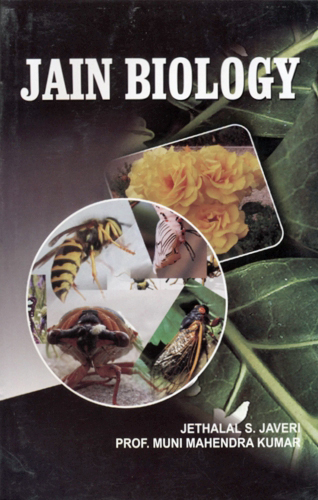The soul which animates a particular organism is manifested in various vital functions of the living organism. They can be classified into four groups called prāṇa (vital force):
- Bala-prāṇa or life potency i.e., capacity for three-fold action—mental, vocal and bodily actions; these are three.
- Indriya-prāṇa or sense awareness, i.e., capacity to apprehend the environment through one or more sense-organs; the number of sense-organs vary with the degree of the development of consciousness; these are five.
- Āyuśya-prāṇa or duration of life, i.e., the capacity of the organism to survive and persist through a fixed and limited duration of life-span.
- Ucchvāsa-niśvāsa prāṇa orvital function of respiration, i.e., the capacity to continue breathing.
Thus the four categories of prāṇa come to a total of ten.
Now it is not difficult to see that these psychical capabilities have empirical value only if there is its physical counterpart called paryāpti (bio-potential). All living organisms are not possessed of all the live sense-organs nor are all endowed with vocal and mental faculties. In other words only those organisms which have the highest degree of consciousness—five-sensed organisms with brain (samjñīpañcen-driya)—are possessed of all pranas, while the lower ones would be possessed of less. Thus, in a one-sensed organism such as a plant, only āyuśya, ucchvāśa-niśvāsa, one of the three bala-prāṇa. i.e., śarīra bala and one of the five indriya-prāṇas, that of the sense of touch, could be explicit and active while the rest would remain implicit and dormant.
In Biology, all the living organisms are divided into two kingdoms - Animal Kingdom and Vegetable Kingdom—and in the (Jain) scriptures all the living organisms are divided into two domains—Mobile and Immobile.
- The Immobile Organisms (Sthāvaras) which are devoid of the ability of locomotion and
- The Mobile Organisms (Trasa) which are endowed with the ability of locomotion.
The Scriptures further classify living organisms from several different aspects such as gati, jāti, kāya etc.
On the basis of Gati (order of existence), there are four types: (1) sub-humans (2) Humans (3) Denizens of hell (4) Denizens of Heaven.
Another aspect of classification is Jāti which refers to the number of sense-organs possessed by the organism. Thus there would be:
- Organisms possessing one sense-organ - Ekendriya
- Organisms possessing two sense-organs - Dvīndriya
- Organisms possessing three sense-organs - Trīndriya
- Organisms possessing four sense-organs - Caturindriya
- Organisms possessing five sense-organs - Pañcendriya
Yet another aspect of classification is the characteristics of the body (kāyā) possessed by the organism. In this case we would have:
- Organisms with molecules of Earth as the body - Pṛthvikāya
- Organisms with molecules of Water as the body - Apakāya
- Organisms with molecules of Fire as the body - Taijasakāya
- Organisms with molecules of Air as the body - Vāyukāya
- Organisms with parts of Plants as the body - Vanaspatikāya
- Mobile organisms with organic molecules as the body - Trasakāya
This is the celebrated ṣaḍjīvanikāya classification of Jains [1]
When we correlate the above aspects, we find that:
All immobile organisms (Sthāvaras) possess only one sense-organ, that of touch: there are five kinds of them and they possess first five types of body—Earth, Water, Fire, Air, and parts of Plants or Vegetables.
Those which possess organic bodies are mobile organisms (Trasa); number of sense-organs possessed by them varies from two to five, i.e., they are classified into (a) two-sensed, (b) three-sensed, (c) four-sensed and (d) five-sensed organisms; sometimes Fire-bodied and Air-bodied organisms are included in trasa category because they possess some kind of mobility. (See synopsis of Uttarādhyayana below). Organisms possessing five sense-organs are further divided into four main categories:
(a) Denizens of hell, (b) Vertebrate sub-human animals, (c) Human beings, and (d) Denizens of heaven (or gods). Each of these are further subdivided into several classes as we shall see later.
Jīvājīvābhigam Sūtra refers to nine different aspects of classification and divides living organisms into two, three, four upto ten classes.[2]
 Jethalal S. Zaveri
Jethalal S. Zaveri
 Prof. Muni Mahendra Kumar
Prof. Muni Mahendra Kumar

